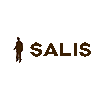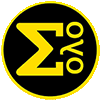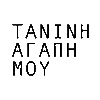Sun, May 26 - Thu, May 30
Crete
Chania Lighthouse
Wikipedia Photos Chania Lighthouse (Greek: Φάρος Χανίων), is a lighthouse located at the entrance of the port of Chania, on the island of Crete, Greece. It was built in 1864 on the site of the original lighthouse by the Venetians. It has been a listed archeological site in Greece since 1962. more
Knossos
Wikipedia Photos Knossos (pronounced ; Ancient Greek: Κνωσσός, romanized: Knōssós, pronounced [knɔː.sós]; Linear B: 𐀒𐀜𐀰 Ko-no-so) is a Bronze Age archaeological site in Crete. The site was a major center of the Minoan civilization and is known for its association with the Greek myth of Theseus and the minotaur. It is located on the outskirts of Heraklion, and remains a popular tourist destination. more
Arkadi Monastery
Wikipedia The Arkadi Monastery (in Greek: Μονή Αρκαδίου) is an Eastern Orthodox monastery, situated on a fertile plateau 23 km (14 mi) to the southeast of Rethymnon on the island of Crete in Greece. more
Rethymno Lighthouse
Wikipedia Photos Rethymno (Greek: Ρέθυμνο, [ˈreθimno], also Rethimno, Rethymnon, Réthymnon, and Rhíthymnos) is a city in Greece on the island of Crete. It is the capital of Rethymno regional unit, and has a population of more than 34,000 inhabitants (nearly 39,000 for the municipal unit). more
Fri, May 31 - Tue, June 04
Athens
Acropolis
Wikipedia The Acropolis of Athens (Ancient Greek: ἡ Ἀκρόπολις τῶν Ἀθηνῶν, romanized: hē Akropolis tōn Athēnōn; Modern Greek: Ακρόπολη Αθηνών, romanized: Akrópoli Athinón) is an ancient citadel located on a rocky outcrop above the city of Athens, Greece, and contains the remains of several ancient buildings of great architectural and historical significance, the most famous being the Parthenon. The word Acropolis is from the Greek words ἄκρον (akron, "highest point, extremity") and πόλις (polis, "city"). The term acropolis is generic and there are many other acropoleis in Greece. During ancient times the Acropolis of Athens was also more properly known as Cecropia, after the legendary serpent-man Cecrops, the supposed first Athenian king. more
Hadrian's Library
Wikipedia Hadrian's Library was created by Roman Emperor Hadrian in AD 132 on the north side of the Acropolis of Athens. more
Kerameikos
Wikipedia Kerameikos (Greek: Κεραμεικός, pronounced [ce.ɾa.miˈkos]) also known by its Latinized form Ceramicus, is an area of Athens, Greece, located to the northwest of the Acropolis, which includes an extensive area both within and outside the ancient city walls, on both sides of the Dipylon Gate and by the banks of the Eridanos River. It was the potters' quarter of the city, from which the English word "ceramic" is derived, and was also the site of an important cemetery and numerous funerary sculptures erected along the Sacred Way, a road from Athens to Eleusis. more
Roman Agora
Wikipedia The Roman Agora (Greek: Ρωμαϊκή Αγορά) at Athens is located to the north of the Acropolis and to the east of the Ancient Agora. more
Tower of the Winds
Wikipedia The Tower of the Winds, also known by other names, is an octagonal Pentelic marble tower in the Roman Agora in Athens, named after the eight large reliefs of wind gods around its top. Its date is uncertain, but was completed by about 50 BC, at the latest, as it was mentioned by Varro in his De re Rustica of about 37 BC. It is "one of the very small number of buildings from classical antiquity that still stands virtually intact", as it has been continuously occupied for a series of different functions. more
Temple of Olympian Zeus
Wikipedia Photos The Temple of Olympian Zeus (Greek: Ναός του Ολυμπίου Διός, Naós tou Olympíou Diós), also known as the Olympieion or Columns of the Olympian Zeus, is a former colossal temple at the centre of the Greek capital, Athens. It was dedicated to "Olympian" Zeus, a name originating from his position as head of the Olympian gods. Construction began in the 6th century BC during the rule of the Athenian tyrants, who envisaged building the greatest temple in the ancient world, but it was not completed until the reign of Roman Emperor Hadrian in the 2nd century AD, some 638 years after the project had begun. During the Roman period, the temple, which included 104 colossal columns, was renowned as the largest temple in Greece and housed one of the largest cult statues in the ancient world. more


























